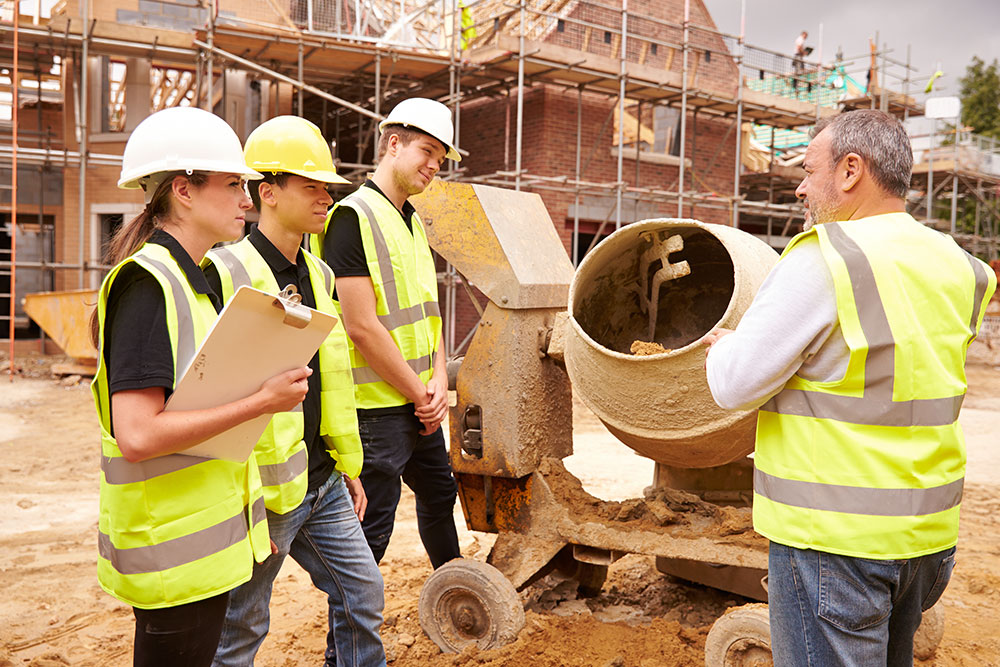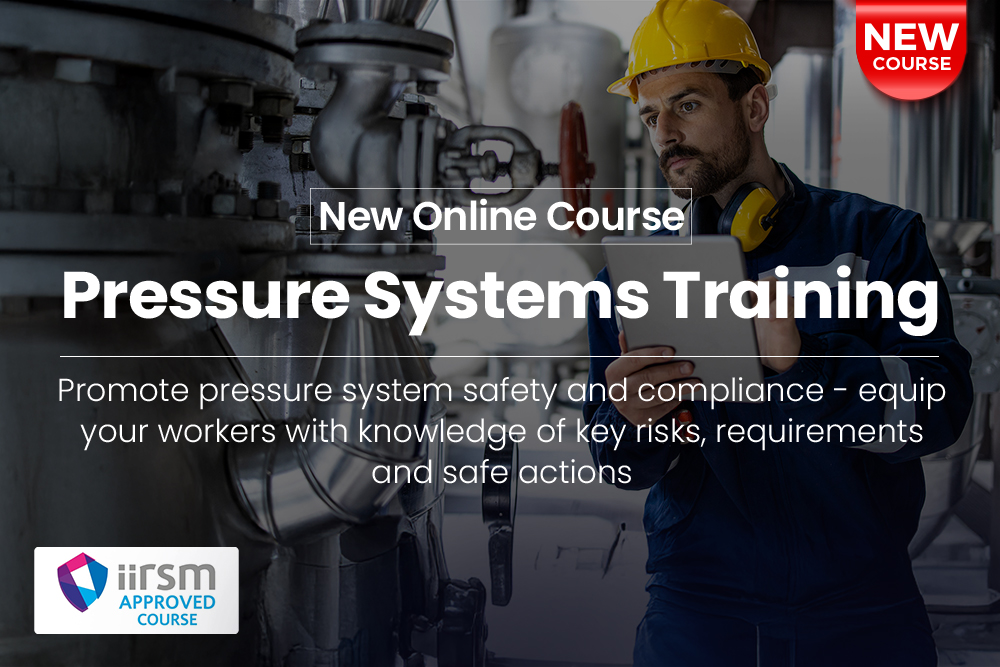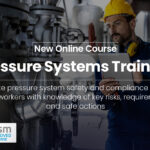
What does PUWER stand for in construction? PUWER is the Provision and Use of Work Equipment Regulations 1998. These regulations state what you must do to make all work equipment safe, from electric drills to excavators.
But different types of equipment need different approaches and no work environment has a broader range of high-risk equipment and machinery than a construction site.
So, duty holders in the construction industry must fully understand PUWER and how to comply with it. Our guide covers the fundamentals of PUWER in construction and what you must do to keep equipment safe, compliant and operational.
What is PUWER?
PUWER imposes duties on those who own, operate, or control work equipment. Businesses whose employees use work equipment must also comply.
Under PUWER regulations, work equipment must be:
- Safe and well-maintained
- Suitable for its intended use
- Used by workers who have received adequate information, instruction and training on its safe operation
All equipment used at work must meet these conditions. Any appliance, apparatus, tool, machinery or installation used on your site must comply with PUWER, even if it’s private property and used elsewhere by its owner. For duty holders in construction, you must also conduct PUWER vehicle checks for vehicles driven on-site where road traffic legislation doesn’t apply.
It’s not uncommon for duty holders to feel intimidated by PUWER. (A fact confirmed by research for our free whitepaper, PUWER: Avoiding Prosecution Nightmares.) Its scope is extensive and compliance depends on your ability to interpret and apply the regulations to various work equipment.
Although compliance initially seems daunting, breaking processes into manageable steps makes it achievable. The Health and Safety Executive (HSE) offers an Approved Code of Practice on PUWER to help with this.
PUWER in Construction
PUWER compliance can be more challenging in construction.
Work is often done by contractors or the self-employed, who frequently supply their own tools and equipment. Other work equipment is owned by the employer or is hired temporarily. In these situations, multiple persons have control over work equipment and some influence on its maintenance or safe use.
Other regulations also commonly apply to construction equipment, notably the Lifting Operations and Lifting Equipment Regulations 1998 (LOLER). When lifting equipment is used, you must simultaneously comply with PUWER and LOLER regulations.
When responsibilities and regulations overlap, the principal contractor must coordinate with all parties to ensure full compliance with PUWER. As part of this, they must inform equipment users who’s ultimately responsible for said equipment and how it can be used safely.
How Do You Make Work Equipment Safe?
Equipment risks are not fixed, so neither are control measures. To determine how work equipment can be made safe, you need to look at its hazards, how it’s used and who it might harm – a process you should recognise as risk assessment.
PUWER applies to all work equipment, but control measures should match the level of risk it presents. A risk assessment lets you determine what’s necessary to eliminate or reduce equipment risks to a safe level.
Equipment must also be maintained in safe working order, so regular maintenance is necessary. But how do you decide what ‘regular’ means when some tools are built tougher than others or equipment is exposed to inconsistent weather conditions? You go back to your risk assessment. It should help you judge how quickly equipment might fall into an unsafe condition. You can then plan when checks should happen to catch any faults, wear or inadequate safety features early. For high-risk equipment, these checks should be a PUWER thorough examination.
PUWER Inspections
PUWER inspections determine if work equipment can be operated safely and are central to compliance.
These inspections are separate from pre-use checks, which scan for faults and can be done by anyone trained. A PUWER inspection goes much further and must:
- Be performed by someone competent
- Identify faults or defects
- Assess safety features and make recommendations if they’re insufficient
Assessing and recommending safety features is not always straightforward. To do it safely, you need training in inspection, knowledge of the equipment, and experience applying PUWER, which is the combination of factors that make someone competent.
Not every piece of work equipment requires inspection. The Health and Safety Executive won’t expect you to complete a full PUWER assessment for hand tools, for example. Instead, use your experience and risk assessments to decide what high-risk equipment needs to be inspected.
What Does a PUWER Inspection Involve?
Inspections should be suited to the examined equipment and its risk level, so there’s no single approach.
The purpose of an inspection is to make the equipment safe to operate. So you (or your appointed inspectors) must understand the equipment being checked, including its use. With this knowledge, you can judge the effectiveness of any guards or safety features – a critical part of any inspection.
Inspections must also identify general wear and tear that might make equipment unsafe. Again, knowledge of the equipment is necessary to do this.
You already have a resource to help overcome these issues – your workers. Workers who use the equipment should be involved in the inspection (and risk assessment) process. If they know the regulations, they can give you insight into how equipment is routinely used and flag safety issues.

Checklists are also helpful. They are often available in digital formats and can help structure inspections to cover all critical points.
Inspections must be recorded and records must be kept between inspections. This is another reason you may find checklists helpful, as digital versions allow for the straightforward recording and sharing of inspection reports.
How Often Do Inspections Need to Happen?
You need to decide how often inspections must happen based on the following:
- The equipment’s risk assessment
- The manufacturer’s advice
- Your own experience
Sometimes, it may be safe to extend periods between inspections if your checks show slight deterioration and safety features are still proving effective. You may need to increase the frequency of inspections if the equipment deteriorates faster.
You should also consider where the equipment is used. Most often, this is outdoors in construction. And equipment exposed to harsh weather or used in conditions it’s not designed for will need inspections more often.
Finally, regulations state that inspections should happen after ‘exceptional circumstances’. The most common example is after equipment has been modified. Modifications void any declarations of conformity supplied with new equipment, making you (the modifier) responsible for proving the equipment meets safety standards.
Do Inspectors Need Training?
As the HSE puts it, any inspector must know what to look at, what to look for and what to do if they find a problem.
You can learn to do this on the job by inspecting low-risk equipment. But, training is a faster route to competency. It can also give you a greater depth of knowledge, letting you inspect a broader range of work equipment.
Our online PUWER Compliance Management for Duty Holders course covers the inspection process and other critical legal duties. You’ll learn how to manage equipment safety and PUWER compliance throughout its lifecycle, including inspections, risk assessments and equipment modifications.
































































































































































































































































































































































































































































































































































































































































































































































